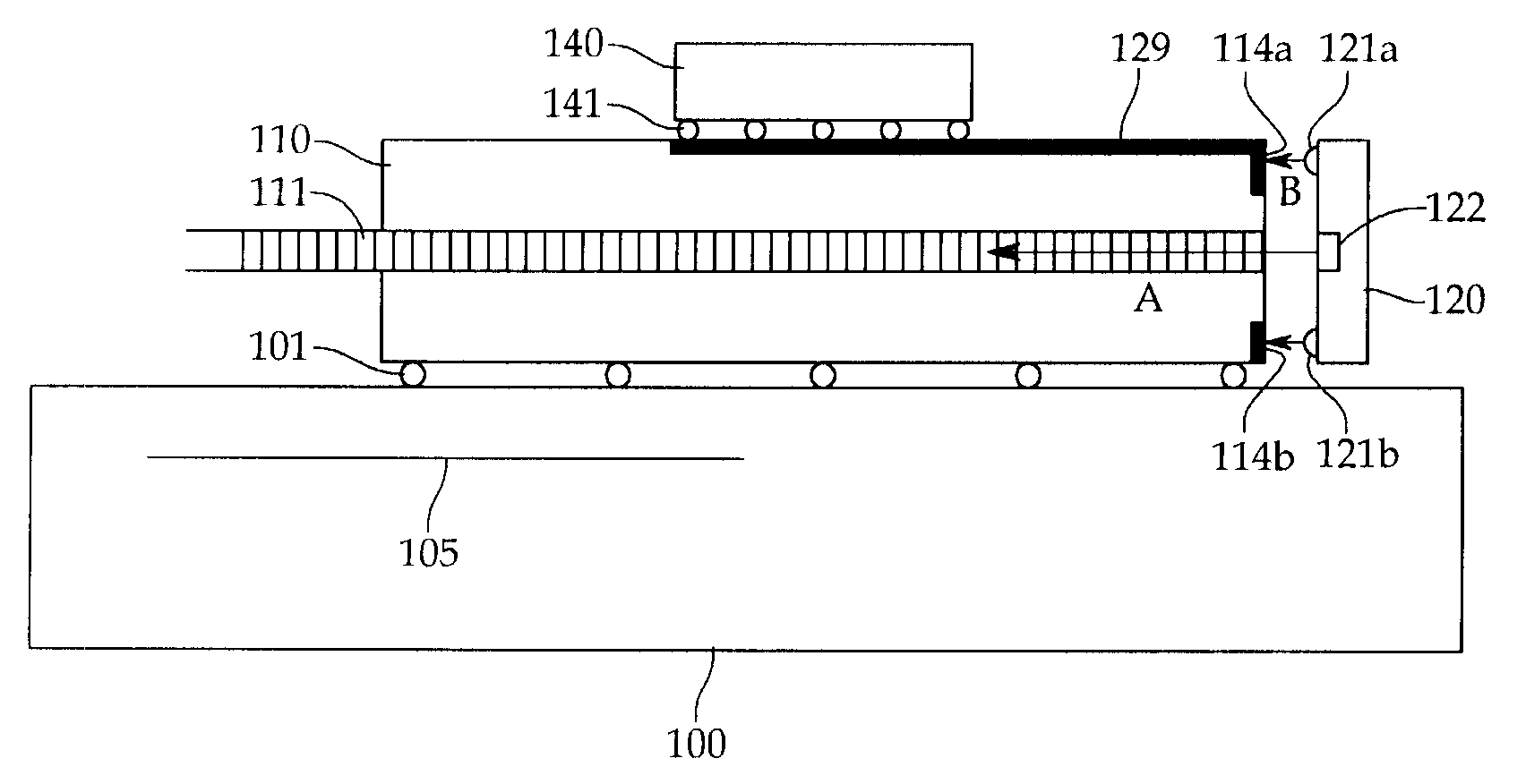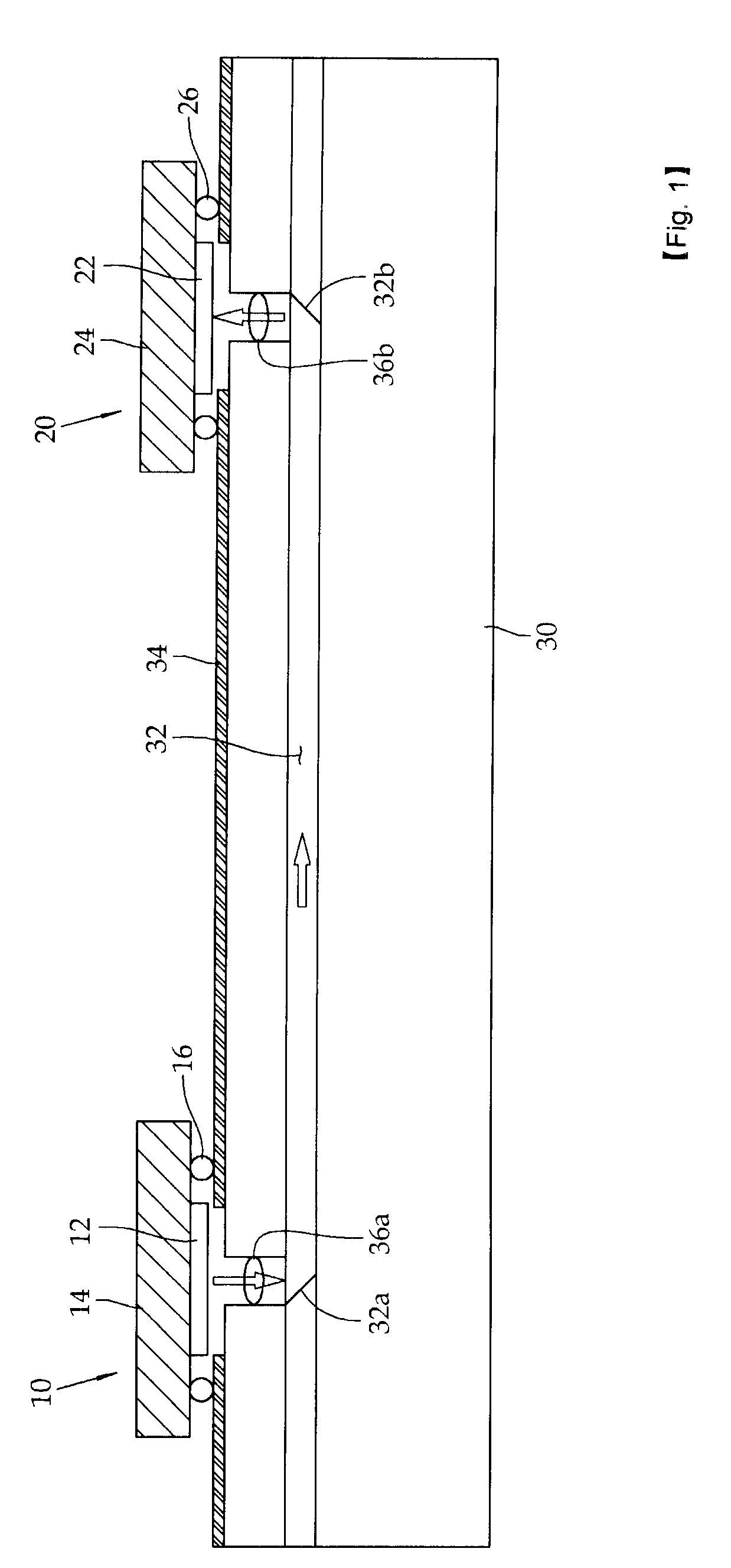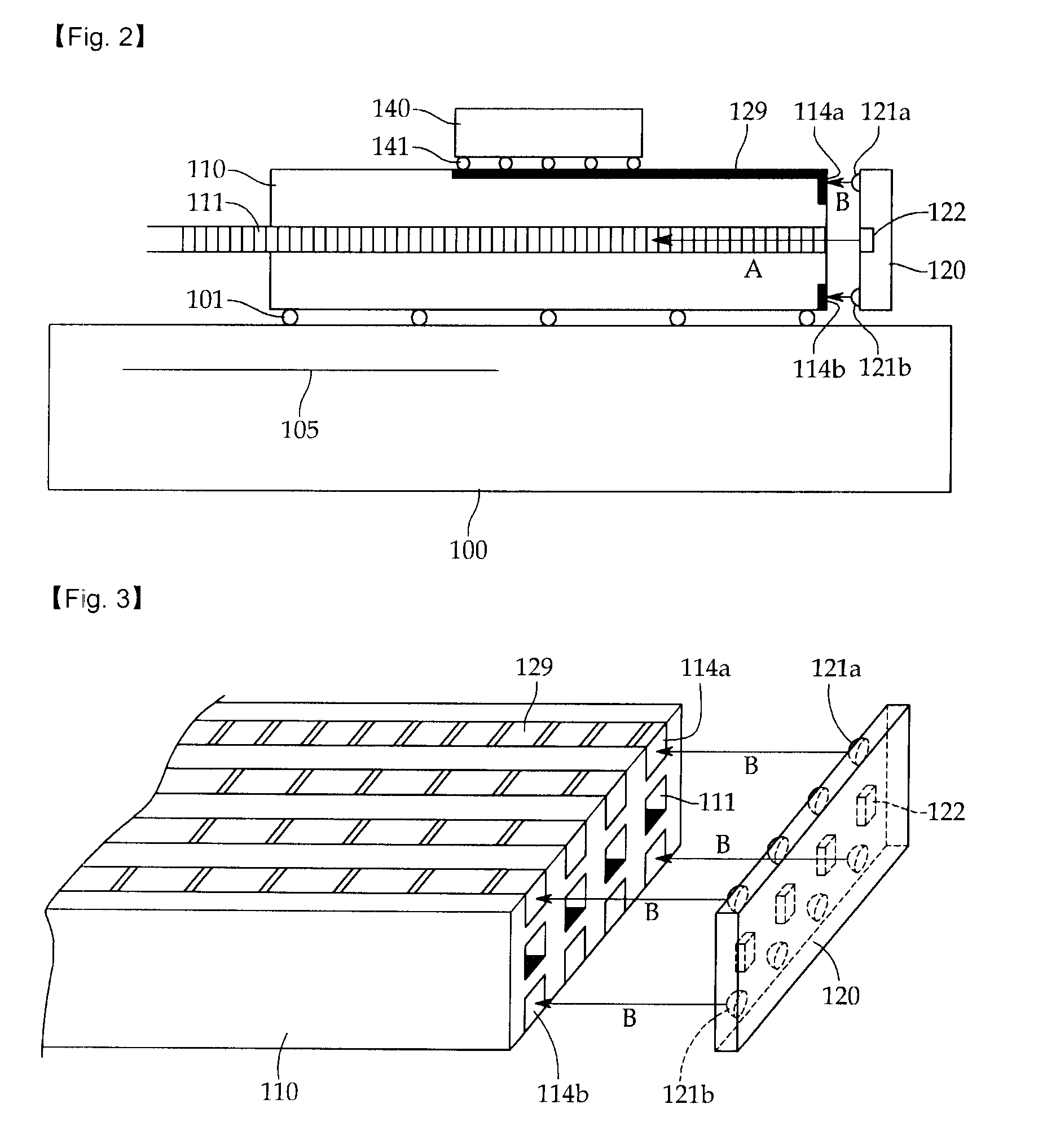Photoelectric conversion module
- Summary
- Abstract
- Description
- Claims
- Application Information
AI Technical Summary
Benefits of technology
Problems solved by technology
Method used
Image
Examples
embodiment 1
[0050]FIG. 2 is a sectional view illustrating a photoelectric conversion module is according to a first embodiment of the present invention.
[0051]As illustrated in FIG. 2, the photoelectric conversion module according to the first embodiment of the present invention comprises: a printed circuit board 100, an integrated circuit (IC) board 110 mounted on the printed circuit board 100 and including an optical waveguide array 111 inside, a semiconductor chip 140 mounted on the integrated circuit board 110, and an optical device array 120 positioned horizontally with the optical waveguide array 111.
[0052]The integrated circuit board 110 is electrically connected to the printed circuit board 100 by a flip chip bonding method using a first connection bump 101. The optical waveguide array 111 positioned in the integrated circuit board 110 is to transmit an optical signal provided from the optical device array 120.
[0053]FIG. 3 is a perspective view illustrating the integrated circuit board 1...
embodiment 2
[0070]FIG. 5 is a sectional view illustrating a photoelectric conversion module according to a second embodiment of the present invention.
[0071]As illustrated in FIG. 5, the photoelectric conversion module according to the second embodiment of the present invention has a similar structure to the photoelectric conversion module according to the first embodiment of the present invention illustrated in FIG. 2, except for a first optical device array 220a and a second optical device array 220b connected to both sides of an integrated circuit board 210.
[0072]In the photoelectric conversion module according to the second embodiment of the present invention, the integrated circuit board 210 is bonded on a printed circuit board 200, by a flip chip bonding method through a first connection bump 201. A signal line 229 is formed on the integrated circuit board 210, to transmit electric signals from a first semiconductor chip 240a and a second semiconductor chip 240b. A first electrode pad 214a...
embodiment 3
[0079]FIG. 6 is a sectional view illustrating a photoelectric conversion module according to a third embodiment of the present invention.
[0080]Referring to FIG. 6, the photoelectric conversion module according to the third embodiment of the present invention has a similar structure to the photoelectric conversion module according to the second embodiment of the present invention, except that a first integrated circuit board 310a and a second integrated circuit board 310b are mounted on a printed circuit board 300, and a first optical device array 320a and a second optical device array 320b are respectively positioned at sides of the first and second integrated circuit boards 310a and 310b facing each other.
[0081]As illustrated in FIG. 6, the first and second integrated circuit boards 310a and 310b are positioned on the printed circuit board 300 so as to be spaced apart from each other. The first and second integrated circuit boards 310a and 310b are connected to each other by an opt...
PUM
 Login to View More
Login to View More Abstract
Description
Claims
Application Information
 Login to View More
Login to View More - R&D
- Intellectual Property
- Life Sciences
- Materials
- Tech Scout
- Unparalleled Data Quality
- Higher Quality Content
- 60% Fewer Hallucinations
Browse by: Latest US Patents, China's latest patents, Technical Efficacy Thesaurus, Application Domain, Technology Topic, Popular Technical Reports.
© 2025 PatSnap. All rights reserved.Legal|Privacy policy|Modern Slavery Act Transparency Statement|Sitemap|About US| Contact US: help@patsnap.com



